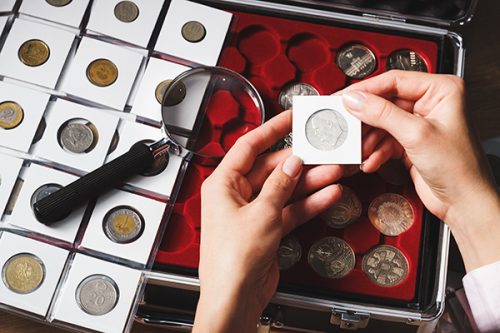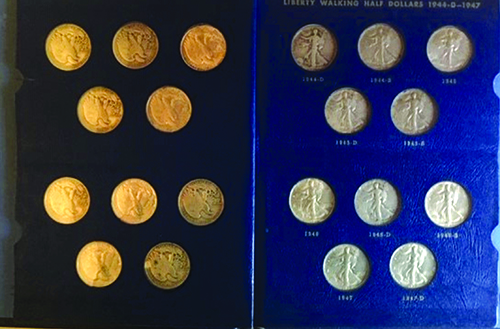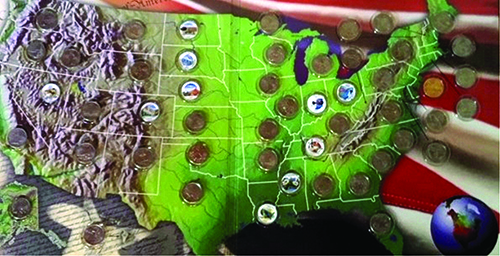
By Thomas J. Bilotta
The trend may be your friend, but it hasn’t been a good friend to the numismatic field in terms of collector retention and hobby expansion. Collectors in the late 1990s, reeling from U.S. Mint continuity programs, could never have envisioned the 2019 graying of the industry and contraction of coin buyers on the Mint’s mailing list.
For many years, the average age of coin collectors has been increasing. According to current estimates, it is now approximately 60 years. As a result, the level of participation in the hobby has not grown. There are some efforts and programs intended to encourage participation by younger collectors, but as of yet there is no strategy that appears likely to reverse this trend. Some have observed that the aging of the Baby Boom generation will increase participation in coin collecting and that the high average age is therefore not a problem. This is short-sighted thinking, as this will only delay and slow the decline. In order for coin collecting to have a bright future, it is necessary to understand why the hobby does not attract many younger participants and seek to offset these factors. Without a change in strategy, either through education or other industry initiatives, it is likely that the number of participants will remain approximately at today’s level until the point at which the infusion of Baby Boomers ends, at which time the hobby will likely decline. At some point, the decline will accelerate and become irreversible.
In order for coin collecting to enjoy a brighter future, we must find a way to encourage participation of new and younger collectors. As a starting point, we need to understand why coin collecting was attractive to young people during the 1900s and identify approaches to recreating the desire to collect coins. It is also important to remember that the seeds of coin collecting in the 20th century were planted among young collectors. Often, young people developed a lifelong interest in coin collecting during their childhood. As they became adults and family and career took precedence, they would temporarily become inactive, but eventually their interest would compel a return to coin collecting.
During the 1900s, there were several factors that drove interest in coin collecting. Coins are one of the few products of a government and tightly intertwined with its history. Therefore, coin collecting is a likely pursuit for those with the collecting bug. This remains true in the 21st century, but there were other important factors as well that no longer are present. During the 1900s, coin designs changed more frequently and consisted of more interesting and symbolic art. These were largely replaced by images of U.S. Presidents that very seldom changed. As a result of the more frequent coin design changes, it was very possible to collect a significant array of coins from circulation at face value. It was also possible to purchase rolls of coins at local banks at face value. The existence of more contemporaries also collecting provided the opportunity to trade coins with friends who shared your interest. These factors combined to create a “thrill of the hunt” that encouraged participation and also resulted in personal gratification.
A second factor present in the 1900s was that many coins were minted in silver, resulting in some intrinsic value. This also encouraged melting to retrieve the metal during periods where the spot price was high and the metal content exceeded the face value of the coin. This reduced the supply, resulting in a shortage of some particular dates and mints, making assembly of a complete set more difficult, challenging and, also, potentially more valuable.
Another factor was availability of inexpensive albums for each coin type, which effectively defined a clear collecting goal. These albums typically contained a hole for each date and mint issue of a coin type, typically 50-100 coins. Because the coins were not packaged in certified slabs albums, the albums were very compact and nicely suited for a bookshelf. A collector could quickly view his or her progress on a particular collection and note the openings that existed and needed to be filled. Completing a coin album was a major source of gratification to the young coin collector and remains so to this day.

is a tool that can clearly define a collecting pursuit.
I have provided an illustration of a typical coin album for Walking Liberty half dollars. This album contains a set of Walking Liberty half dollars that was assembled from circulation and trading during the middle of the 20th century by a long-term collector who began collecting in childhood.
These factors all encouraged active participation in coin collecting and also rewarded participation with the pride of accomplishment and often growth in value. Unfortunately, as we entered the 21st century, most of these factors have disappeared.
As we enter the 21st century, coin designs are dominated by United States Presidents, which are generally less interesting artistically than earlier designs. Collecting coins in circulation has almost become impossible, with the exception of error and variety collecting. Though error and variety collecting are very challenging, they are not likely to generate much interest among the young, as errors are often difficult to find and also require detailed knowledge. No circulation coinage is minted using precious metals, eliminating the possibility of melting and reduction of available supply. The joy of filling a coin album has been diminished by the domination of certified coins that imprison a coin in a plastic holder unsuitable for filling the hole in an album.
The recent experiences with the state quarter and presidential dollar programs provide quite a bit of help in understanding the problem that is faced by the hobby and also offer the opportunity to identify a way forward.
The Statehood Quarter Program, which began in 1999, made it possible for young collectors to again find coins in circulation and, as a result, many new collectors began to enter coin collecting and the overall market began to grow. Every child knows there are 50 states, and the coin designs for each state contained some symbol specific to the state’s culture or history. Because these coins widely circulated, complete sets could be obtained in pocket change, and the opportunity to trade with other young collectors existed. The state theme was also very effective as it not only provided the opportunity to fill a coin album with a complete collection of the 50 states, but also offered the opportunity for more attractive holders.

I have included here an illustration of a state quarter map sold by the United States Mint containing one opening for each state. This collection contains both original coins as well as coins colorized by third parties that were widely manufactured while this series was being issued.
The state quarter program created significant interest in coin collecting, temporarily expanding its numbers and benefiting many areas of coin collecting. At one point, the U.S. Mint announced that more than 140 million Americans were collecting the state quarters. This program clearly demonstrated that coin collecting interest among the young could be rekindled with issues restoring the “thrill of the hunt” with interesting designs and subjects. As the program ended, the Mint attempted to sustain it with the Presidential Dollar Program, which began in 2007 and ended in 2016. Collecting presidents is a compelling objective. However, since the dollar coin is not widely used in circulation, this program failed to capture the imagination of young collectors, and towards the end of the program, the mint even stopped circulation issues, as the inventory of dollar coins far exceeded the requirements of commerce.
Young people remain interested in collecting. Trading cards are widely collected. These are often distributed as a part of other products consumed by the young or purchased inexpensively. As a result, there is widespread interest and the ability to share collecting with friends. The “thrill of the hunt” once enjoyed by young coin collectors is preserved among those collecting cards. Trading cards also often contain interesting graphics and topics.
In order for coin collecting to thrive, it will be necessary to replace these lost factors with new ones. I am working on a new book, tentatively entitled Collecting Coins in the 21st Century, which will address this topic in great detail and identify strategies to restore the enjoyment of coin collecting to a new generation. Exclusive to COINage readers is my road map, never published before, to the reinvigoration of coin collecting.
Most important is the “thrill of the hunt,” as active participation is essential to the growth of the hobby. Fortunately, there are some new trends that offer the opportunity to help grow interest in coin collecting, foremost among them being the internet. The internet allows collectors all over the world to pursue their hobby without geographical limitation. Online auctions and dealer inventories provide modern vehicles that can be used to find coins coupled with an enjoyable process that will reward active participation. This also allows collectors to define more complex collecting objectives that they would encounter in pocket change from their own country.
By expanding interest beyond the borders of the United States, coupled with the access provided by the inventory, it is possible to define and obtain coins at relatively little expense. Objectives can be defined based on a wide variety of possible interests including geographic, historical, and thematic collections. Euro coinage is a particular area of collecting with many designs of circulating coins issued by many countries available at face value.
There is also an answer to revival of the gratification of filling a coin album. Clearly if you have a coin worth thousands of dollars, you will want the protection and grade guarantees that come with a slab. But for coins worth less than a few hundred dollars, you may find that the enjoyment you receive by placing your uncertified coins in albums is worth more than the protection of guarantee of the grade from certification.
Coupling coin collecting with other historical collectibles such as military memorabilia, paper money, and political memorabilia and documents affords an opportunity to use coin collecting as a part of a more comprehensive collection of historical significance. For example, many are interested in the Civil War and could combine a wide array of collectibles from this period, both numismatic and other.
Minting techniques, designs, and coinage metals all have a story to tell with respect to the time when the coins appeared. Coin collecting is a means of capturing this history in a meaningful way. Though some coins can be a good investment, the success of coin collecting is dependent on the ability to inspire collectors to define collecting goals. There must be sufficient motivation to cause collectors to expend meaningful effort on attaining these goals. Once achieved, the collector must realize a substantial sense of gratification in order to encourage further pursuits in coin collecting.
Want to receive COINage magazine in your mailbox or inbox? Subscribe today!












